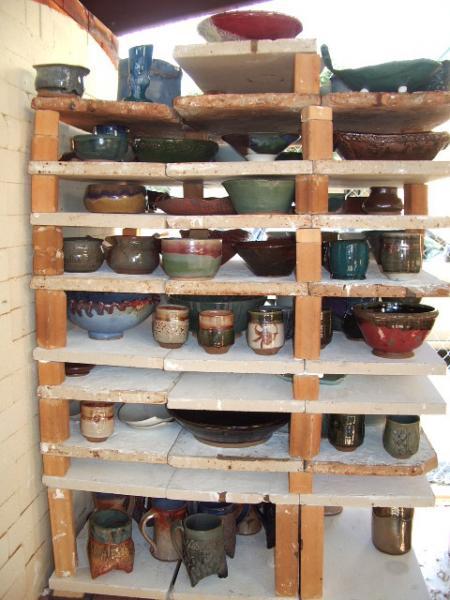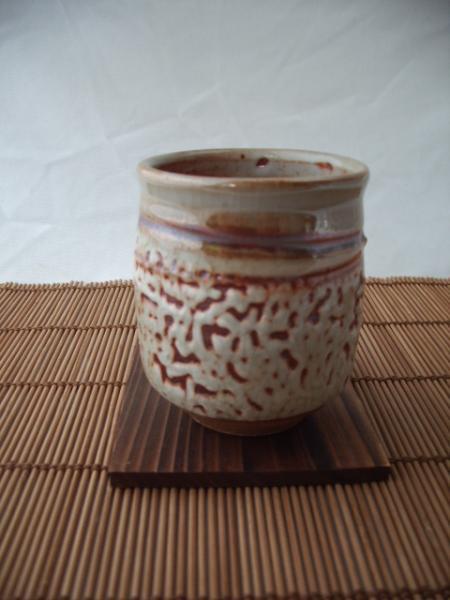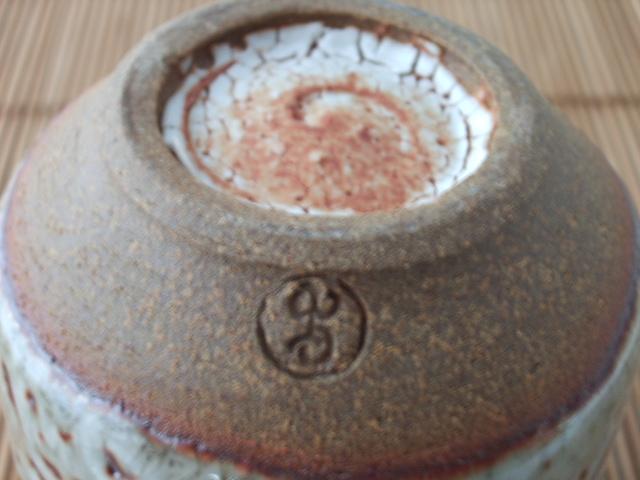-
Posts
6,424 -
Joined
-
Last visited
Content Type
Profiles
Forums
Store
Help Articles
Everything posted by Richard Kilgore
-
Today I started with the Assam Napuk from TCC that's in my morning black tea rotation, and then went on to the Gyokuro that I am using to learn how to brew them. I drank so much Gyokuro that I'm turning into a cousin of Kermit the Frog. Folllowed by a smooth aged shu pu-erh.
-
You may also be interested in a Capresso electric water kettle. I got my current one from friend and eG Society member Tony Boulton and I am sure they are available elsewhere also. I previously used an English copper Windsor and really liked the look, but the Capresso is so much more practical. It heats water much faster and more efficently than a stove top kettle, so I also use it when I need hot water in a pan, or for a stock, brasie or stew, to give it a head start. Another option is a Chinese electric water kettle that works great for tea brewing, gong fu especially. They have them at your favorite Chinese grocery market. These things work better as a dedicated gong fu water heater than my Capresso and I'll eventually spring for one.
-
What measurements of tea and water are you using? And what temperature of water? Ideally, it's 10grams to 80mL of 60C water for gyokuro vs 10grams to 210mL of 80C water for sencha. The brewing time is a wee bit longer than sencha--90 seconds vs sencha's 60 seconds. To me, gyokuro is smoother and less astringent than sencha, so it's either your brewing method or the quality of gyokuro you're using. I am sure it's me and my brewing method and maybe, just maybe, the quality of the leaf. I'll be posting over the next couple of days in the Japanese Green Tea topic on the multiple approaches I have been trying.
-
Very attractive set up, WmC. I like those tasting cups. Are they as thin-walled as they look? While there are good reasons to consider another water kettle solution, avoiding spills is pretty much not only impossible, but not necessarily desirable. It's helpful to be able to pour hot water over the top of a brewing Yixing pot and/or to have it sitting in a puddle of hot water. So try simply putting your Yixing of whatever size in a bowl, any bowl - cereal bowl, soup bowl - anything that will comfortably accommodate it. You may be able to find a Yixing bowl made expressly for this purpose at wing hop fung. That's what I use when brewing tea at my cutting board instead of my tea table.
-
Here's a link to The New Tea Companion. This came out in late 2008, co-authored with Bruce Richardson this time, with a lot of positive reaction in the tea community. I have glanced through it and will get a copy soon. Anything that promises to give me a closer starting place for over 120 teas is worth adding to my tea library. And I don't think you're going to find anything this focused, well organized and handy on-line. This is a world in which books still count. On-line merchants typically have somewhat generic instructions for the various categories of tea; wish it were not so, but it is. One reason, of course, is that there are so many variables involved in brewing tea that you are going to have to tweak whatever instructions you follow as a starting point. Most list quantity of tea by the teaspoon because few people have scales appropriate for tea (down to 1/10th g). This is similar to the problem with pastry and baking books listing measures by the scoop and sweep method rather than more accurately by weight - a constant irritation, but it's not going to change in a big way any time soon for the same reason. There are something over 2,000 teas in China alone, so having specific brewing guidelines for every tea we may run across is not going to happen - on-line or in a book. I deal with some of the ambiguity by asking questions, especially if brewing a tea turns out to be more challenging than I think it should, or if the instruction that came with the tea seem a little off. That's what tea shop people are for, b&m or on-line. Dan at Yuuki-cha.com has been enormously helpful in answering my questions by email as I have gotten more serious about brewing Japanese green teas. Greg Glancy at Norbutea.com is also very accessible and Kyle and Adam at The Cultured Cup shop have always been available to discuss brewing. Just ask. While I understand why anyone would find all this a bit frustrating, I have come to see it as part of the process that I enjoy. Learning to brew a new tea and trying to find its sweet spot. I am working on a post or series of posts about learning to brew Gyokuro that is a good example of the confusion and contradictory ideas on brewing that may face us. Over in the Japanese Tea topic in the next two or three days.
-
Drank several teas and other tea-like drinks at The Cultured Cup's T-Bar Club tonight. The topic was "Odditeas". I took no notes so I'll have to report detail on this later with a pic in the T-Bar Club topic.
-
Today I have been drinking the 2009 First Pluck Alishan High Mountain Oolong from Norbutea.com. This is similar to the Alishan featured in the 2009 Alishan High Mountain Oolong Tasting & Discussion: floral aroma and taste, creamy mouthfeel, lingering after taste. And it goes a long time - I'm on my eighth infusion and it is still going strong. And what teas are you all drinking today?
-
The Cultured Cup caries dozens of their teas, so I expect that they have many, many more teas in their Mariage Frères tea room shops than on their website. It's true that they have many flavored teas, but they do it incredibly well. MF is a historic tea merchant and should be more than worth a stop.
-
Ah, Big Red Robe (Da Hong Pao), many versions of this and one of my favorites. Tonight I an drinking a Mariage Frères Genmaicha from The Cultured Cup. A nice toasty green tea, though I like The Cultured Cup's Matcha Genmaicha even better.
-
Interesting differences, lperry. I think part of it may be different sets of taste buds, but also may be the nature of this blend: there are a lot of chunks of dried fruit in the blend that may easily be in very different proportions in a teaspoon or two. I recall noticing a lot of pineapple the first time I brewed this. But if you are brewing a jug of tea, it may well average out the fruity components. I brewed a second time today, two teaspoons to 8 ounces just barely off boil water for 5 minutes. Iced and without the sugar, the black tea was noticeably, but not strongly, astringent. As you did, I added sugar to a portion of the hot brew, iced it and the fruit popped up, but not with the pineapple dominating this time. I usually prefer iced tea without sugar, but you are right - this is one that benefits from a little. Next time I would be inclined to use a little more tea leaf and go for your 4 minutes rather than my 5 in order to dampen the astringency a bit while pumping up the flavor and concentration before icing.
-
I met Ginny Marsh at the Dallas Crafts Guild Ceramics Studio where she has been working on a variety of pieces for a Fall show at The Cultured Cup. I got there right after some work was coming out of the kiln shared by guild members. I really like this small yunomi and drank Sencha from it for the first time yesterday. It's just the right size for a 5 ounce cup of tea. One more Ginny Marsh yunomi to show later.
-
I also got around to trying the Organic Sencha from Den's Tea yesterday. I'll post more on that soon in the Japanese Green Tea topic. Today I started with the Assam Panitola from Tea Source. Such a smooth Assam. So, what are you all drinking in your part of the tea world?
-
This morning it was the Castleton Estate, Second Flush Darjeeling from Tea Source. One of my favorites....okay a lot of Darjeeling tea drinkers' favorites. Then on to a Sencha Fuka-midori in a sample pack from Den's. See the Japanese Green Tea topic for more.
-

Japanese Green Teas - Sencha, Gyokuro...and more,
Richard Kilgore replied to a topic in Coffee & Tea
Brewed the Den's Sencha Fuka-midori today. 2.9 g (I was aiming for 3.0 g, but this is close enough for internet tea drinking, isn't it?) in 5.5 ounces of 175 F water in a (not pre-heated) Banko kyusu. First infusion 1 minute, second infusion 30 seconds. Both were smooth with no astringency or bitterness, slightly more vegetal and sweeter on the second infusion. Also a little thin on the second infusion, so I think I could have gone another 10 seconds or so. I'll go to 90 seconds on the third infusion, but I don't think this Fuka will give much beyond that, which is okay. -
They have had this for a while now, so I am curious about how you all are using the various salts from the CM Salt Bar?
-
I enjoy calm, leisurely grocery shopping, though it's not possible every trip, of course. Mostly produce, meat, fish and fowl, but in Asian markets especially I like to take time to explore frozen and prepared foods, too. All part of my food education. Central Market here in Texas has the best customer service I have seen in a grocery store: if I ask what's the difference between three or four types of pears and which taste the best right now, one of the produce guys offers to sample them. What's this new melon? - Let's try it and see. Poking around in the deli section, I ask what's the difference between these four types of capers? - Like to sample them? Nice way to spend an hour or so.
-
Jeff, check out The Cultured Cup's flavored black teas, both their large selection of Mariage Frères teas and others they have sourced recently. I have had the Fruits Rouges and Fruits Noirs, separately and blended, and the Ying Yang Tea Blend featured in a current Tea Tasting Discussion is worth checking out. My creation, so I am taking the liberty of dubbing the black tea + hibiscus tea the Byron Nelson.
-
I have a gaiwan that is about 55 ml and is perfect for trying most new Chinese teas, except for those with long leaves that will not fit without breaking them. But if I am using a larger gaiwan, I don't feel compelled to drink all of every infusion, though I do some times. Sometimes I'll drink half or less of an infusion and then either dump the rest or pour it into a container to hold the excess of each infusion; this is most often if I think the excess will work as an iced tea, because tea does not re-heat well. Why a gaiwan over a Yixing for evaluating a new tea? Because the porcelain is neutral and will give me the best idea of what the tea is like. Then I may try it in a Yixing next to see if that particular Yixing will make it better or worse. And with a larger Yixing, it's also okay to not fill it to full capacity. A small gaiwan - or a large one that you dump half the tea out of - are both preferable to a bladder augmentation.
-
This morning it was the Mariage Frères Yunnan Imperial from The Cultured Cup. Then I continued brewing a Da Hong Pao from the evening before. This tea I bought from TCC also, but 1 1/2 - 2 years ago. I drink a little from time to time for it has been a special tea, not a daily one. The new Yixing really rounds off the tea, absorbs much of the mustiness and brings out the fruit notes. A great tea. I'll post more in the Oolong topic soon about this and other versions of Da Hong Pao.
-
Even with glazed teapots, people differ and have strong opinions about letting some tea build up in the interior of a pot, or not, as this discussion topic shows. I brew several different black/red teas in my glazed Brown Betty, so I rinse it out thoroughly each time, but do not scrub or wipe the interior and it works well for me. It might work better if I used one pot only for, say, Darjeelings and let some buildup occur, but I don't know. Maybe someone else can speak to that. It is important, however, to distinguish the appearance of tea stains from seasoning when it comes to pots such as Yixing clay pots from China or unglazed Kyusu from Japan. Unglazed clay seasons by absorbing tea oils, but in doing so they do not have to take on a ratty stained appearance, unless you want them to. Some people like them stained and some work to keep an even appearance inside and out. With unglazed clay it is important to never use soap or detergent to clean them; just clear out the tea leaves and rinse out with hot water. In fact some people say not to bother trying to get all the tea leaves out. I once bought an older Yixing pot that had a few dry leaves of Oolong rolling around inside. For more on seasoning Yixing teapots in various ways before using for the first time, see the Yixing Teapot topic.
-

Staffordshire Oatcakes
Richard Kilgore replied to a topic in United Kingdom & Ireland: Cooking & Baking
Tony brought a personal supply of Stratfordshire Oatcakes back to Texas from his recent trip, evading watchful US Customs agents assigned to Oatcake smuggling. A true friend, he shared a stack of these with me and advised me on the prep. I found a good mature English Cheddar, but lacking a source for lean English bacon had to settle for the usual. Everyone liked them much, so I'll have to work up a recipe that will work here. -
It's been several months since the last inquiry. Anyone have the new edition? How does it compare to the original in terms of content. And is the binding a problem?
-
I am not sure that the bleach is really a problem. Did you try pouring water into the thermos after the treatment and tasting it? Could be that a shorter bleaching may be all that is needed. (Also make sure the gray-black is not a shadow or interior reflection in the thermos.) I use durgol express for stainless steel thermos (thermi?) and carafes, as well as glass; it's a fast decalcifier designed for coffee and espresso machines, but you could try any coffee machine cleaner.
-
I have been surprised to find very drinkable bottles of wine at Sprouts Markets for as little as 3 for $10, with a 10% discount when you buy 6 bottles. These are South African and Australian wines. They are simple, not complex in any way, but tasty, everyday table wines. Anyone else find bottles of beyond-inexpensive wine? Anything you can recommend?
-
Today I started with a nice Assam. This afternoon I began a gong fu cha session with a Spring 2009 Huang Jin Gui from norbutea.com. It's a very nice Anxi Oolong cousin of TGYs. More on this soon in the Oolong topic.




